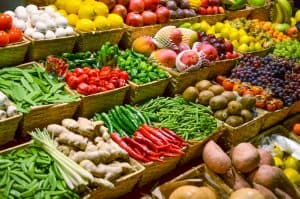
Sensors that detect a product’s ripeness and quality throughout processing could be a big factor in reducing the amount of food that goes to waste.
Sensors that detect a product’s ripeness and quality throughout processing could be a big factor in reducing the amount of food that goes to waste.
According to the United Nations Food and Agriculture Organisation, 14 percent of the world’s food is lost before it reaches the shelf. For any country aiming to meet a Zero Hunger target, this should be an area to look into, with new tools being developed to improve farming.
SEE ALSO: How Farms Could Become the New Smart Factories
In a study published by Stellenbosch University researchers Jean Nturambirwe and Umezuruike Opara in Science Direct, three solutions are previewed: crop monitoring, post-harvest quality monitoring, and market quality monitoring.
“Machine learning has made great achievements in detecting plant diseases and fruit,” said Nturambirwe. “These new developments allow for fast and effective quality determination and prediction in fresh produce.”
Crop monitoring comes in the form of sensors in the ground and around the farm, which take all sorts of readings. These are then fed to a machine learning system that is able to detect growth conditions, product ripeness, and environment changes, reducing losses at harvest.
Machine learning has already been used to detect new viruses, like the banana streak virus and citrus greening, in plants across the world. With this knowledge, farmers can isolate the plant and reduce spreading.
After harvest, fruit and veg still go through many processes before ending up on shelves. One of the first is being sorted into different quality standards.
For local shipments, sensors can be used to quickly determine the quality of thousands of pieces of fruit, reducing the time it takes to ship. For international shipping, sensors can detect if the product will remain ripe throughout the entire journey.
Once the product has left the sorting facility, it can still be tracked, through sensors inside trucks, vans and shipping containers. Buyers can be notified if a product is damaged on route, and suppliers can figure out why the product was damaged and ensure it won’t happen again.





























